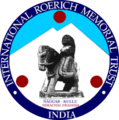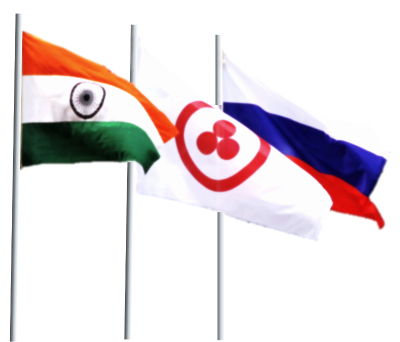It is Yuri Roerich to whom we are obliged for an opportunity to get widely acquainted with the multi-faceted creative heritage of his parents – Nicholas and Helena Roerich. His parents’ long cherished dream to come back to their Motherland was not realized during their life time.
1 H. Roerich’s letter dated February 25, 1953. // The ICR Archive.
2 L. Goumilev. Y. Roerich as Historian of Central Asia. Report at the meeting of the Oriental Commission of the USSR All-Union
Geographic Society, dedicated to the memory of Y. Roerich. 20.12.60. The author’s manuscript.
3 L. Shaposhnikova. The Light of the Morning Star // The Unified Scientific Center
for Problems of Cosmic Thinking – M.: ICR, 2005. – P. 79 – 115.
4 Y. Roerich. Tibet and Central Asia – Samara: Agni, 1999. – P. 200.
5 Recollections About Y. Roerich. – M.: ICR; Master-Bank, 2002. – P. 8.

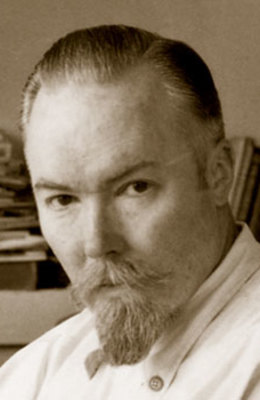
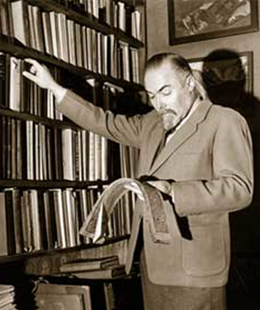





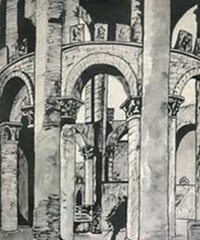
George Roerich /Yuri Nikolayevich Roerich/ (1902 – 1960)
Yuri Roerich is one of the greatest orientalists, linguists, and encyclopedists of the 20th century, and his name is known in many countries around the world. He spoke fluently more than 30 European and Asian languages and dialects, was a brilliant expert in Eastern culture, religion and philosophy. He also represented that synthetic trend in Oriental Studies in which Russia could justly take pride.
Young Roerich’s paintings and graphics performed during his school years testify to the broadness of his interests and his versatile talents, as well as to his artistic gift.
Having graduated from the Karl May Gymnasium, he entered the Indo-Iranian Department of the London University School for Oriental Languages. His outstanding abilities for languages were so obvious that he was introduced as the best Sanskrit student to the Secretary of State for Indian Affairs who came to visit the University.
In September of 1920, Yuri Roerich together with his parents left for the USA. There he entered Harvard University, in the Indian Philology Department, at the same time he took up Pali and Chinese languages. His purposefulness was striking: at the age of 18 he was already a formed Orientalist having his own subject and his own trend in science.
After graduating from Harvard University with a Bachelor and Master degrees, Yuri Roerich continued his education in France, in the School for Oriental Languages at the University of Paris. He worked for a year at the Central-Asian, Mongolian and Tibetan Departments of this University, and at the same time studied at the Military Department and Department of Law and Economy. In 1923, Y. Roerich graduated from the University of Paris and received a Master degree in Indian Philology.
At the age of 21, Yuri Roerich had already started an independent scientific research work. Since that moment, all his further scientific activities became permeated by high humanist aspirations.
The result of these journeys was a brilliant monography – “Tibetan Painting” (Paris, 1925). This scientific study completed by Yuri Roerich at the age of 23 is unique, as no other similar works have ever been written since then. Decades later, the modern reprint of this study, undertaken by the International Center of the Roerichs in 2002, would be highly appreciated by the 14th Dalai-Lama.
From 1925 to 1928, Yuri Roerich occupied the main stage of the Central Asian expedition. Yuri Roerich, despite his young age, was entrusted to take care of the expedition’s safety. There, his knowledge of military science proved more than useful. Not only once Yuri Roerich’s tactical skills and personal courage saved the caravan. In addition to this, he acted as a translator, by speaking perfect Mongolian and other Tibetan languages, as well as a number of Central Asian dialects. This allowed him to communicate with the local population and was of inestimable scientific use. It would not be an exaggeration to say that without Yuri Roerich, it would not have been possible to solve many of the tasks that awaited the Central Asian expedition.
Yuri Roerich described in his study “The Animal Style Among the Nomads of Northern Tibet” (Prague, 1930) , the discovery during the Central Asian expedition of menhirs, cromlechs and stone graves – an occurrence that became a significant event in scientific world.
The unique achievements of the expedition were reflected in Y. Roerich’s monographic work “Along the Paths of Central Asia” (London, 1931) which immediately placed the young researcher within the ranks of the scientists-pioneers of Asia.
Upon the completion of the expedition enormous scientific material that had been collected on route was passed on to the Himalayan Research Institute “Urusvati” founded in July of 1928. L. Shaposhnikova, eminent modern researcher of the Roerich family life and oeuvre, in her study “The Light of the Morning Star” writes that this material “was the first precious seed of that new science of which the Living Ethics wrote and the Teachers standing high on the ladder of cosmic evolution spoke” [3, pp. 79-115]. For more than 10 years, Yuri Roerich was the Institute’s Unchallenged Director.
Defining the Institute goals, he wrote: “Comprehension of the main ways of mankind’s development is a step to understanding one’s own personality. Turning back to the past, we reveal the present for ourselves. <…> A forgotten civilization is concealed in the mountains; it keeps ancient wisdom and culture. It is here that the science which has found itself in a deadlock can find its renovation. Ancient wisdom is the key with which archeologist and naturalist open secrets of the Oriental culture. <…> Again a time is coming when the Oriental knowledge penetrates into our life and subordinates to itself science” [4, p. 200].
As a distinguished encyclopedic-scientist, Yuri Roerich was elected a member of the Royal AsiaticSociety in London, the Asiatic Society in Bengal, the Paris Geographic Society, the American Archeological and Ethnographic Societies, and many others.
In 1934 – 1935, Y. Roerich together with N. Roerich undertook an expedition to Manchuria and Inner Mongolia organized on the initiative of the US Department of Agriculture with the purpose of collection of seeds of drought resistant plants that prevent erosion of soils and the spreading of pests. Besides purely scientific objectives, the expedition also pursued a social and cultural goal – the creation on the territory of Manchuria and, afterwards, of Inner Mongolia, of agricultural cooperatives on the basis of wide public collaboration.
Thanks to Y. Roerich’s direct participation, not only bans on everything associated with the Roerichs were lifted, but also multiple myths on their life and creative work fell to pieces. Thanks to Yuri Roerich, people around him learnt about the essence and the main concept of the Living Ethics Teaching or Agni Yoga. It was Y. Roerich who started the Roerich cultural movement in the USSR.
Due to Yuri Roerich’s participation and support, the first exhibitions of Nicholas Roerich paintings were organized: first in Moscow (April of 1958), and then in Leningrad, Riga, Kiev, Tbilisi, and other cities.
For the first time, Y. Roerich managed at the governmental level to raise the question of establishing Nicholas Roerichg Museum in the country. For this purpose, he passed on as a gift to the Russian Museum about 350 paintings of his father, on condition that they’d be permanently displayed; 60 canvases were given to the Novosibirsk Art Gallery. Unfortunately, while Yuri Roerich was alive, his dream was not to come true. The state did not establish a permanent display of Nicholas Roerich’s paintings in the Russian Museum. To this very day, most of those canvases have not been on open display for spectators and still remain in storage, collecting dust. As a man, a scientist and a citizen of his country, Yuri Roerich was an outstanding personality. According to Svetoslav Roerich, “Yuri Roerich is the image of a true, inspired scientist and thinker, a man of the highest spiritual harmony. He was well aware that the highest achievement of man is the self-improvement of his personality, and that only due to constant work on himself and development of his qualities a man, striving for a more perfect life, could comprehensively enrich his occupation and raise it above the level of routine” [5, p. 8].
Yuri Roerich passed away on May 21st, 1960, at the age of 58. His ashes were buried in Moscow, at the New Maiden Cemetery. Svetoslav Roerich is author of the memorial to this outstanding Russian scientist.
Text and photo from en.icr.su
In August of 1957, Y. Roerich returned to Moscow from India. It became possible thanks to N. Khruschev’s personal involvement; he had met Yuri Roerich during his official visit to India. Only after that, Y. Roerich got Soviet citizenship and permission to come back to his Motherland.
In Moscow, Yuri Roerich started working in the Institute of Oriental Studies of the USSR Academy of Science and headed the “Section of Indian Philosophy and History of Religions”. For almost three years spent in the Soviet Union (August 1957 – May 1960), he carried out work of incredible scope, compared to a whole human life. Yuri Roerich revived scientific traditions of the Russian Oriental Studies, created a Russian school of Tibetan Studies, and thanks to him, for the first time in the USSR, Sanskrit started to be taught. Finally, he laid the foundations for a new science – Nomadistic studies. For a short time during his activities in Moscow, Yuri Roerich prepared for publication a Tibetan-Russian-English dictionary in several volumes with parallels in Sanskrit and several articles and scientific studies. On Yuri Roerich’s initiative, works on translation and publication of ancient philosophic and literary manuscripts of the East were resumed.
Yuri Roerich’s fundamental scientific study “The History of Middle Asia” that remained in handwritten form and on which he had worked for many years should be especially noted. He started working on it in India and planned to complete it – but did not complete – in his Motherland. Using the term “Middle Asia”, Yuri Roerich meant the vast territory from the Caucasus to Great Khingan and from the Himalayas to Altai. This study is a cultural and historical review of the most important state and cultural formations in the huge territory of Eurasia. Presently, the International Center of the Roerichs released the 1st volume of this unique study. Taking into account that the USSR autorities had been for a long time trying to form a distorted impression of the Roerich family in the public mind, Yuri Roerich’s repatriation and acquisition of Soviet citizenship would be a courageous and selfless step.
G. Roerich. In the castle.
1917 – 1918
Yuri Roerich was born in the village of Okoulovka of the Novgorod Province, on August 16th, 1902. He spent his childhood and adolescence in Saint Petersburg. From an early age, the boy took interest in history and military science. Helena Roerich wrote in her letters: “The elder son showed love for history and tin soldiers. He had thousands of them. His passion for the art of war has survived until now. Strategy is his pet subject. By the way, this talent is inborn, and he is very proud of his ancestor – field-marshal Mikhail Golenischev-Kutuzov, the hero of the war of 1812” [1].
G. Roerich.
Tibetan painting. 2002
In 1923, the Roerichs family moved to India. There started the first stage of the Central Asian expedition organized by N. Roerich. In 1924 after a short short-term but a very tight and long distance traveling around India (December of 1923), Yuri Roerich together with his family undertook minor expeditions around Sikkim – a country of snowy giants and ancient monasteries – and Bhutan, a territory in the Eastern Himalayas.
H. and G. Roerich during the Central-Asian expedition. 1927 – 1928
Little duck. “Beast Style”.
Bronze from the Roerich family collection
L. Goumilev wrote: “Yuri Roerich’s study of the “animal style” in Tibet which long ago became a bibliographic rarity, is quoted by all historians of the Scythian and Sarmat art as a composition that made an epoch in science” [2].
G. Roerich at the entrance
to the ”Urusvati” Institute.
1930s
Yuri Roerich spent more than 35 years abroad, lived in India for a long time. Nevertheless, he always remained a true patriot of his Motherland, and never acquired foreign citizenship. When fascist Germany attacked the Soviet Union, Yuri Roerich immediately sent a telegram to the Soviet Embassy in London with a request to recruit him as a volunteer in the Red Army, but received a refusal.
G. Roerich. History of Middle Asia. 2002
He revived the famous series “Biblioteca Buddhica”, founded by the outstanding Russian Orientalist S. Oldenburg in 1897 and dedicated to Buddhist philosophy, religion and art. Yury Roerich worked as the academic editor for A. Vostrikov’s book “Tibetan Historical Literature” and the fundamental Buddhist treatise “Dhammapada” (a collection of Buddha’s quotations). This literary monument of the ancient Indian philosophic thought became an important stage in the study of Buddhism in this country.
G. Roerich. Moscow. 1958 – 1960
Their elder son, Yuri Roerich, who returned their good name and great heritage to the Soviet Union, nevertheless, realized it. He brought to Motherland part of his parents’ legacy: more than 500 paintings by his father, a huge library and valuable items.
